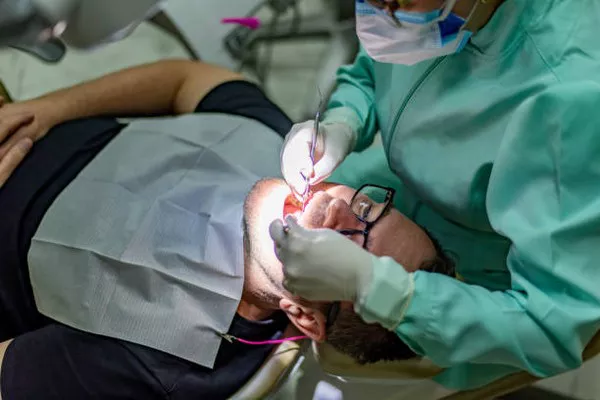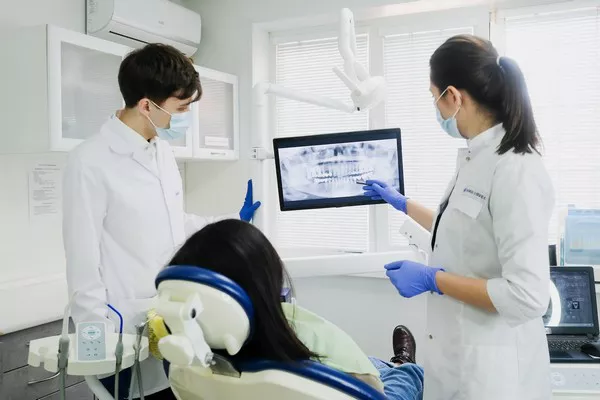After dental implant loosening, there may be loosening phenomenon. Patients who have received dental implants should strictly follow the guidance of doctors, including self-cleaning and maintenance, regular professional removal of calculus and plaque return visit maintenance.
In order to make your dental implant more effective and longer service for you.
Did implant tooth become loose to do?
1. For those with obvious loosening of the implant and complete inability to exercise its supporting function, the implant should be removed on the premise of a clear judgment of the lack of bone support around the implant.
All connective tissue in the implant socket must be carefully and thoroughly scraped off. After carefully checking to confirm that there is no residual fibrous connective tissue, the implant site should be thoroughly rinsed to make it full of blood clots. Bone meal and hydroxyapatite can be filled if necessary.
The gingival tissue of the implant neck was excised, and the mucoperiosteal flap was relaxed and tightly sutured without tension to completely cover the implant area.
After the removal of the implant, if the remaining implants are sufficient to support the denture, there is no need to reimplant. Otherwise, the implant can be reimplanted at the original implant site one year later when new bone has formed.
2. If the bone around the implant is absorbed but the loosening of the implant is not obvious, flap scraping can be performed to remove the inflammatory tissue and other soft tissues around the implant, and then add hydroxyapatite mixed with blood or other bone substitutes, and then close suture.
It should be noted that the diagnosis of incomplete osseous union should be made not only by the presence of a radiographic area around the implant, but also by clinical examination of the range of motion of the implant.
It should not be judged only by the radiographic area around the implant, especially in the first year after surgery, because the bone reconstruction has not been completed, there may be a thin layer of radiographic area around the implant on the X-ray film, so it is not easy to judge the removal.
The reasons for early implant failure are inappropriate treatment planning, surgical trauma, implant overload, and pathogenic bacteria.
The results showed that THE failure of implant was related to microbiota, mainly Gram-negative bacilli, and the ecological environment of periimplantitis was similar to periodontal disease.
So if you do dental implants or to the regular dental implant institutions more at ease.
How many years the average implant lasts is something that many people who want to have dental implant surgery are eager to know.
In developed countries, the 5-year survival rate of people with dental implants is more than 95% and the 10-year survival rate is about 90%.
The modern dental implant technology was first advocated and practiced by Professor Branemark of the University of Gothenburg in Sweden in the early 1960s. After decades of joint efforts of many scholars from multiple disciplines, it has developed into an independent research category in the mature stomatology supported by multidisciplinary cutting-edge technology.
It should be said that the progress in this research field has fundamentally established a more scientific, reasonable and perfect new concept and method for the restoration of dentition loss cases.
It is generally believed that the average service life of fixed fixed teeth in fixed restorations is 8 years.
According to ADA clinical standards, the 5-year and 10-year retention rates are 95% and 85%, respectively.
In other words, the service life of dental implants should be much longer than that of traditional fixed restorations.
How many years an implant can last is an urgent question for many people who want to have an implant operation.
In developed countries, the 5-year survival rate of people with dental implants is more than 95% and the 10-year survival rate is about 90%.
But these figures only reflect the average level, the length of life of each implant is not only related to the quality of treatment, but also closely related to the patient’s later physical condition, use and self-maintenance.
The latter is a decisive factor in the longevity of dental implants.
Therefore, patients who have received dental implants should strictly follow the guidance of physicians, including self-cleaning and maintenance and regular professional removal of calculus and plaque follow-up maintenance.
In this way, your implant will serve you more effectively and for a longer time.
Can tell you: one of the earliest modern dental implants, perfect service for the tooth missing has been more than 40 years!
The relationship between the implant and the periodontal is similar to that of the natural teeth. It is necessary to carry out special cleaning of the implant around the implant and conventional cleaning of the surrounding natural teeth.
To maintain the long-term stability of dental implants.
The implant needs to coordinate with the natural tooth to maintain the normal function of the oral and maxillofacial system, and the implant should be adjusted regularly to adapt to the changing relationship.
Like natural teeth, implant teeth are made up of multiple parts, but natural teeth are organically connected, while implant teeth are connected by screws or adhesives. Regular inspection of implant teeth is necessary to check whether the various parts of the implant are faulty, so that they can be repaired in time.
With good oral hygiene and regular checkups, implants can last as long as real teeth.






























